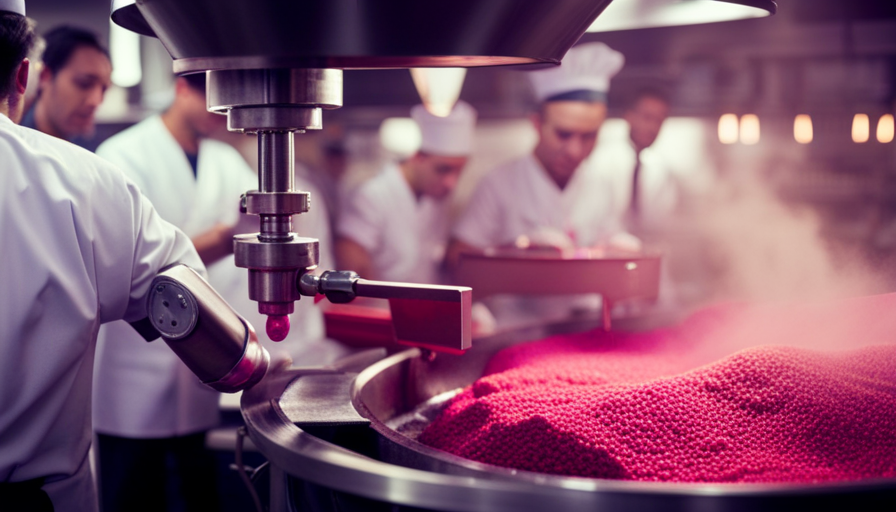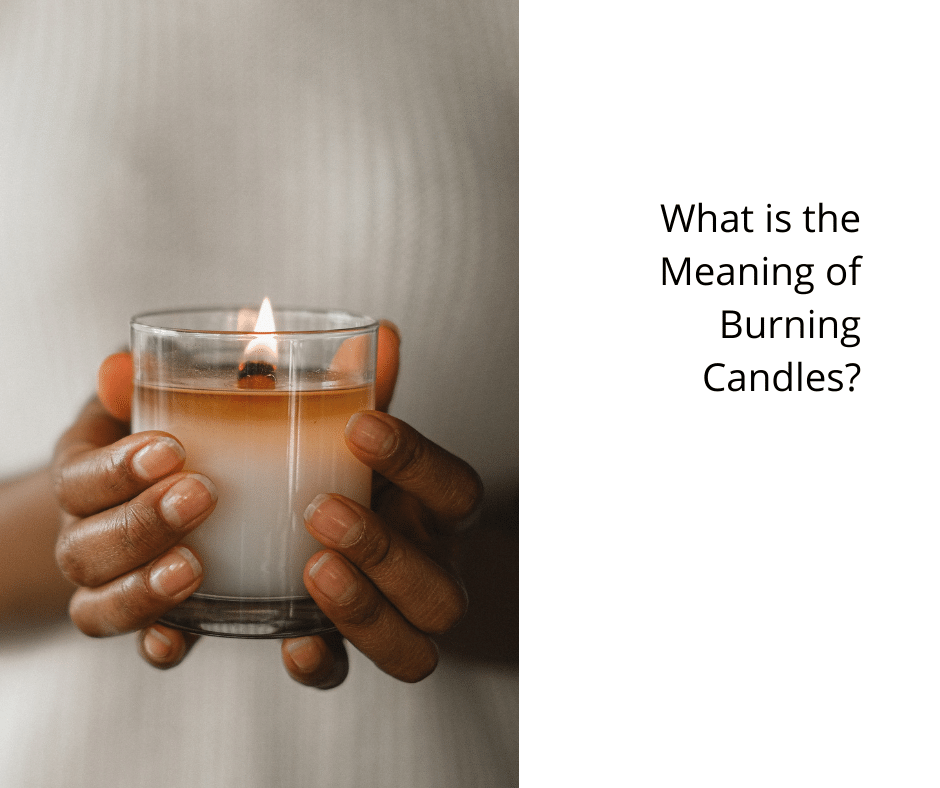Did you know that Americans consume over 90 million pounds of sour candy annually? It’s evident that there is a widespread love for the tangy, tart flavor that makes our mouths water.
But have you ever wondered how sour candy is made? In this article, I will take you through the fascinating process of creating this beloved treat.
To start, sour candy is made using a combination of key ingredients such as sugar, corn syrup, flavorings, and acids. These ingredients are carefully measured and mixed together in large industrial mixers. Once mixed, the candy mixture is cooked at high temperatures to achieve the desired texture and consistency.
After cooking, the candy is shaped and formed into various shapes and sizes using specialized molds. But what gives sour candy its signature kick? It’s all in the sour coating. This coating is made by mixing citric acid, malic acid, and sugar together, creating that mouthwatering sour taste.
Once the candy is shaped and coated, it goes through a cooling and drying stage to harden and set. Finally, the finished product is packaged and distributed to stores, ready to be enjoyed by candy lovers everywhere.
Now that you have a glimpse into the sour candy-making process, it’s time to dive deeper into each step. Join me as we explore the ingredients, mixing process, shaping techniques, sour coating, and more.
Get ready to satisfy your curiosity and sweet tooth all at once!
Key Takeaways
- Sour candy is made using sugar, corn syrup, flavorings, and acids
- The candy mixture is cooked at high temperatures and shaped using specialized molds
- The sour coating is made with citric acid, malic acid, and sugar
- Excessive consumption of sour candy can have negative effects on oral health
The Ingredients Used in Sour Candy
You’ll be amazed at the vibrant and mouth-puckering experience of sour candy as it’s made with a combination of tangy citric acid, fruity flavors, and a hint of sweetness.
Sour candy flavors are created using a variety of ingredients that contribute to their unique taste. The main ingredient responsible for the sourness is citric acid. This compound is found naturally in citrus fruits and gives sour candy its tangy punch. Other ingredients, such as malic acid and tartaric acid, may also be used to enhance the sour flavor.
In addition to the sour taste, sour candies are known for their intense fruity flavors. These flavors are achieved using a combination of natural and artificial flavorings. Common fruity flavors include cherry, apple, strawberry, and watermelon. These flavors give the candy a burst of sweetness that balances out the sourness.
While sour candy can be a delicious treat, it’s important to consume it in moderation. Excessive consumption of sour candy can have negative effects on oral health, as the high acidity levels can erode tooth enamel. Additionally, some sour candies may contain high levels of sugar, which can contribute to tooth decay and other health issues when consumed in excess.
Now that we’ve explored the ingredients used in sour candy, let’s delve into the fascinating mixing and cooking process that brings these flavors to life.
The Mixing and Cooking Process
In the mixing and cooking process of making sour candy, I start by melting and blending the ingredients together. This involves heating the sugar, corn syrup, and water in a large pot until they dissolve and form a syrupy mixture.
Next, I cook the candy mixture to a specific temperature, typically around 300 degrees Fahrenheit, using a candy thermometer to ensure accuracy.
Lastly, I carefully control the temperature and consistency of the candy by monitoring and adjusting the heat as needed. This ensures that the candy reaches the desired texture and sourness before it is poured into molds to cool and set.
Melting and blending the ingredients
To create the perfect blend of flavors, start by melting and combining the ingredients, allowing them to harmonize into a tantalizing symphony for your taste buds.
-
The first step is to melt the sugar, corn syrup, and water in a large pot over medium heat. This ensures that the ingredients blend together smoothly.
-
Once the mixture reaches the desired temperature, carefully add the citric acid and flavoring extracts. Blending techniques, such as stirring or whisking vigorously, are used to evenly distribute the flavors.
-
Next, the melted mixture is poured into molds or onto a cooling table. This allows the candy to set and solidify while maintaining its blended flavors.
Blending techniques and ingredient ratios are crucial in achieving the perfect balance of sweet and sour in each candy. Now that the ingredients are melted and blended, it’s time to move on to the next step: cooking the candy mixture.
Cooking the candy mixture
Now comes the crucial step of creating the candy concoction: cooking the combination to create a delectable delight. Cooking techniques play a vital role in determining the final texture and taste of the sour candy. The candy mixture, consisting of melted sugar, corn syrup, and flavorings, is heated to a specific temperature to achieve the desired consistency. This process involves carefully monitoring the temperature and employing specialized equipment, such as candy thermometers, to ensure precision. Flavor customization is another aspect of the cooking process, allowing candy makers to add unique tastes like fruit extracts or citric acid. By adjusting the cooking time and temperature, they can create a wide variety of sour flavors. Controlling the temperature and consistency is crucial to achieving the perfect balance of tartness and sweetness in the final product.
Controlling the temperature and consistency
Achieving the perfect balance of tartness and sweetness in the final product requires precise control over the temperature and consistency. Controlling temperature is of utmost importance in candy making, as it affects the texture, flavor, and overall quality of the candy. However, maintaining the ideal temperature can be challenging, as even a slight variation can alter the outcome. To overcome this, candy makers use techniques such as using a candy thermometer, which allows them to monitor the temperature accurately.
Additionally, they employ methods like double boiling or using a water bath to ensure gradual and controlled heating. Another crucial aspect of candy making is maintaining consistency. This involves carefully following the recipe and using the right proportions of ingredients. It also requires constant stirring to prevent the formation of sugar crystals. By controlling the temperature and consistency, candy makers can create candies that have the perfect blend of tartness and sweetness.
In the next section, we will explore the shaping and forming of the candy.
The Shaping and Forming of the Candy
The candy magically transforms into various shapes through a mesmerizing process. Shaping techniques play a crucial role in creating the desired form of sour candies.
Once the candy mixture has reached the correct temperature and consistency, it is transferred to a specialized machine that molds it into unique shapes. This molding process involves pressing the candy mixture into molds with the help of mechanical force. The molds are intricately designed to create intricate details and patterns on the candy’s surface.
Different shaping techniques are used depending on the type of candy being produced. For example, gummy candies are typically made using starch molds, while hard candies are formed using metal molds. The candy mixture is poured into the molds, which are then cooled to solidify the candy into the desired shape. Sometimes, a process called extrusion is used, where the candy is forced through a die to create long ropes or strands.
The shaping and forming of the candy is an important step in the production process, as it determines the final appearance and texture of the sour candies. Once the candies have been shaped, they are ready for the next stage of production: the addition of the sour coating.
The Addition of Sour Coating
When it comes to making sour candy, one key step is the addition of sour coating. This involves applying citric acid or malic acid to the candy, which gives it that signature tangy flavor. It’s important to coat the candy evenly to ensure a consistent sourness throughout.
Additionally, some candy makers may choose to enhance the sourness by adding other ingredients such as tartaric acid or fumaric acid.
Applying citric acid or malic acid
To make your sour candy even more mouth-puckeringly delicious, I’ll start by applying either citric acid or malic acid. Citric acid, commonly found in citrus fruits, adds a tangy and refreshing flavor to the candy. However, it’s important to note that consuming excessive amounts of citric acid may lead to dental erosion and digestive issues. Alternatively, malic acid, derived from apples, provides a similar sour taste without the same health concerns. It is also known to enhance the flavor of the candy. To give you a visual understanding, here is a table showcasing the health effects of citric acid and alternatives to using it in sour candy production:
| Citric Acid | Health Effects |
|---|---|
| Dental erosion | Digestive issues |
| Alternatives | Benefits |
|---|---|
| Malic Acid | Enhances flavor |
Now that the acid is applied, let’s move on to the next step of coating the candy evenly.
Coating the candy evenly
Now that we’ve applied the tangy acid, let’s make sure our candy is evenly coated for the perfect balance of flavor in every bite. Coating techniques are crucial for achieving the desired sourness. Here are three key methods to ensure an even coating:
-
Tumbling: The candy is placed in a rotating drum, where it tumbles and rolls continuously. This allows the acid to distribute evenly over the candy’s surface.
-
Spraying: A fine mist of the acid solution is sprayed onto the candy. This method ensures precise and uniform coverage.
-
Electrostatic coating: By applying an electric charge to the candy and the coating material, the candy attracts the coating particles, ensuring an even distribution.
These coating techniques guarantee that every piece of candy receives the necessary amount of sourness. To enhance the sourness further, we’ll explore additional ingredients in the upcoming section.
Enhancing the sourness with additional ingredients
Incorporating extra ingredients can take the sourness of our candy to new levels, creating a mouth-puckering experience. To enhance the sourness, we utilize alternative ingredients that add an extra punch of acidity. These ingredients include citric acid, malic acid, and tartaric acid. Each of these acids contributes to the overall sour flavor profile of the candy.
To paint a clearer picture, here is a table showcasing the different alternative ingredients used in our sour candy-making process:
| Acidic Ingredient | Sourness Level |
|---|---|
| Citric Acid | High |
| Malic Acid | Medium |
| Tartaric Acid | Low |
By carefully selecting and combining these alternative ingredients, we can achieve the perfect balance of tartness and sweetness in our candies. This ensures a delightful and enjoyable taste experience for our customers.
Moving forward, during the cooling and drying stage, the candy undergoes a transformation that solidifies its shape and locks in the sourness.
The Cooling and Drying Stage
In the cooling and drying stage of candy production, it’s crucial to allow the candy to cool and harden. This process helps to solidify the candy and give it the desired texture.
Additionally, excess moisture needs to be removed during this stage to prevent the candy from becoming sticky and to ensure a longer shelf life.
Proper cooling and drying techniques are essential for achieving optimal texture and preserving the candy’s quality.
Allowing the candy to cool and harden
After the mixture is poured into molds, it takes approximately 30 minutes for the sour candy to cool and harden completely. During this cooling process, the candy undergoes a transformation from a hot, liquid state to a solid, chewy texture.
As the candy cools, the molecules within the mixture slow down and arrange themselves in a structured pattern, giving the candy its firmness. The cooling also allows the candy to retain its shape and prevents it from sticking to the molds. As the candy hardens, it becomes less malleable and more resistant to deformation.
This cooling stage is crucial in creating the desired texture and consistency of the sour candy. Once the candy has cooled and hardened, it is ready for the next step of removing excess moisture, which helps enhance its shelf life and quality.
Removing excess moisture
To enhance the texture and extend the shelf life of your homemade treats, you’ll need to carefully eliminate any excess moisture from the cooled and hardened mixture. Proper drying techniques and moisture removal methods are essential in achieving the desired consistency and preserving the candy.
One popular method is air drying, where the candy is exposed to a controlled airflow to facilitate moisture evaporation. This process can take anywhere from a few hours to several days, depending on the candy’s size and thickness.
Alternatively, you can use a food dehydrator, which provides a more controlled and efficient drying environment. By removing excess moisture, you not only prevent the candy from becoming sticky, but you also reduce the risk of bacterial growth, ensuring proper texture and shelf life.
Ensuring proper texture and shelf life
Achieving the perfect texture and extending the shelf life of your homemade treats is crucial, so make sure you carefully eliminate any excess moisture from the mixture to preserve its quality and enjoy it for longer. To ensure proper texture and preserve freshness, here are five key steps to follow:
- Use a dehydrator to remove excess moisture from the candy mixture.
- Monitor the temperature and humidity levels during the drying process.
- Incorporate the right amount of cornstarch or other drying agents to absorb excess moisture.
- Store the candies in airtight containers to prevent moisture absorption.
- Consider adding desiccant packs to further reduce moisture levels in the packaging.
By following these steps, you can achieve the desired texture and prolong the shelf life of your sour candies.
Now, let’s delve into the next stage of the process, which involves packaging and distribution.
Packaging and Distribution
In the packaging and distribution stage of sour candy production, we carefully wrap each individual candy to ensure its freshness and protection. These wrapped candies are then grouped into bags or containers, ready to be sold to consumers.
Once packaged, the sour candy products are shipped to various retailers for sale, allowing customers to enjoy the tangy and intense flavor of these treats.
Wrapping individual candies
Start by carefully folding the candy wrapper around the tangy treat, creating a tantalizing package that holds the sweet and sour surprise within. Wrapping techniques play a crucial role in ensuring that each sour candy is properly sealed and protected.
A variety of packaging materials are used, including wax paper, cellophane, or plastic wrappers, depending on the specific candy type and manufacturer’s preference. The wrapper not only keeps the candy fresh and prevents it from sticking to other candies, but it also serves as a barrier against moisture and air, preserving the candy’s flavor and texture.
Once the individual candies are wrapped, they are ready for the next step of grouping them into bags or containers, where they’ll be conveniently packaged for distribution and sale.
Grouping candies into bags or containers
To group your candies into bags or containers, you’ll need to carefully arrange them in a way that maximizes space and ensures easy access for customers.
Did you know that on average, a bag of mixed candies contains over 50 different flavors?
When it comes to grouping candies, packaging techniques play a crucial role in maintaining their freshness and appeal. Here are some key techniques used in the industry:
-
Layering: Candies are strategically layered to prevent breakage and ensure stability during transportation.
-
Sealing: Bags or containers are sealed tightly to maintain the candy’s texture and prevent moisture from entering.
-
Labeling: Each bag or container is labeled with the candy’s flavor, ingredients, and expiration date for consumer convenience.
-
Variety packs: Some manufacturers group candies of different flavors together in variety packs, providing customers with a wide range of taste options.
-
Custom packaging: Companies also offer personalized packaging, allowing customers to create their own assortment of candies.
By understanding these grouping and packaging techniques, manufacturers can effectively ship and sell their sour candy products, ensuring customer satisfaction and enjoyment.
Shipping and selling the sour candy products
After grouping the candies into bags or containers, the next step is to ensure that the sour candy products are shipped and sold efficiently. This involves carefully planning the shipping logistics and implementing effective marketing strategies.
In terms of shipping logistics, it’s crucial to consider factors such as packaging, transportation, and delivery timelines. The sour candy products need to be properly packaged to prevent any damage during transit. Choosing the right transportation method is essential to ensure that the products reach their destination in a timely manner.
Additionally, coordinating with distributors and retailers to determine the best marketing strategies is vital for successful selling. This may include promotional campaigns, product placement in stores, and online advertising.
By meticulously managing the shipping logistics and implementing strategic marketing, sour candy manufacturers can maximize their reach and boost sales.
Frequently Asked Questions
How long does it take for sour candy to cool and dry before it can be packaged?
The cooling time of sour candy before it can be packaged varies depending on factors like the size and thickness of the candy. However, on average, it typically takes about 20 to 30 minutes for the candy to cool and dry sufficiently.
This cooling process is crucial to ensure that the candy maintains its shape and texture. Once cooled, the candy can be packaged and prepared for distribution.
What is the shelf life of sour candy?
Sour candy, or should I say the ‘eternal treat,’ has quite a long shelf life if stored properly. Under ideal storage conditions, such as in a cool, dry place, sour candy can last for up to one year. However, it’s important to note that its quality may deteriorate over time, resulting in a less intense sour flavor.
So, if you want to savor that tangy goodness to the fullest, it’s best to consume it within the first few months.
Are there any specific health concerns related to consuming sour candy?
There are specific health risks associated with consuming sour candy. The high sugar content can lead to tooth decay and cavities. Additionally, the sour flavor is often achieved through the use of citric acid, which can erode tooth enamel over time.
It’s important to practice good oral hygiene and limit consumption of sour candy to minimize the negative effects on teeth.
How do manufacturers ensure consistent sourness in each piece of candy?
Manufacturers ensure consistent sourness in each piece of candy through various sour candy manufacturing techniques. One interesting statistic is that it takes an average of 10-20 minutes to produce a single piece of sour candy. The process involves carefully measuring and mixing ingredients to achieve the desired level of sourness.
Additionally, sourness can be enhanced by adding citric acid or other sour flavorings. Quality control measures, such as taste testing and pH monitoring, are also implemented to ensure consistent sourness in every candy piece.
What are some popular flavors of sour candy?
Popular sour candy brands offer a wide range of flavors to satisfy different preferences. Some popular flavors include watermelon, green apple, cherry, and blue raspberry. Making homemade sour candy involves combining sugar, citric acid, and flavorings. The mixture is then heated and cooled to form a syrup, which is poured into molds and allowed to harden. The result is a mouth-puckering treat that can be enjoyed by sour candy enthusiasts.
Conclusion
In conclusion, the process of how sour candy is made is a fascinating journey from start to finish. The careful selection and combination of ingredients, along with the precise mixing and cooking process, creates the perfect base for the candy.
The shaping and forming stage adds a touch of creativity, while the addition of the sour coating gives it that tangy and mouth-puckering taste we all love.
Finally, the cooling and drying stage ensures the candy sets properly before it is packaged and distributed to eager candy enthusiasts.
So next time you enjoy a piece of sour candy, remember the intricate and scientific process that goes into making it.









